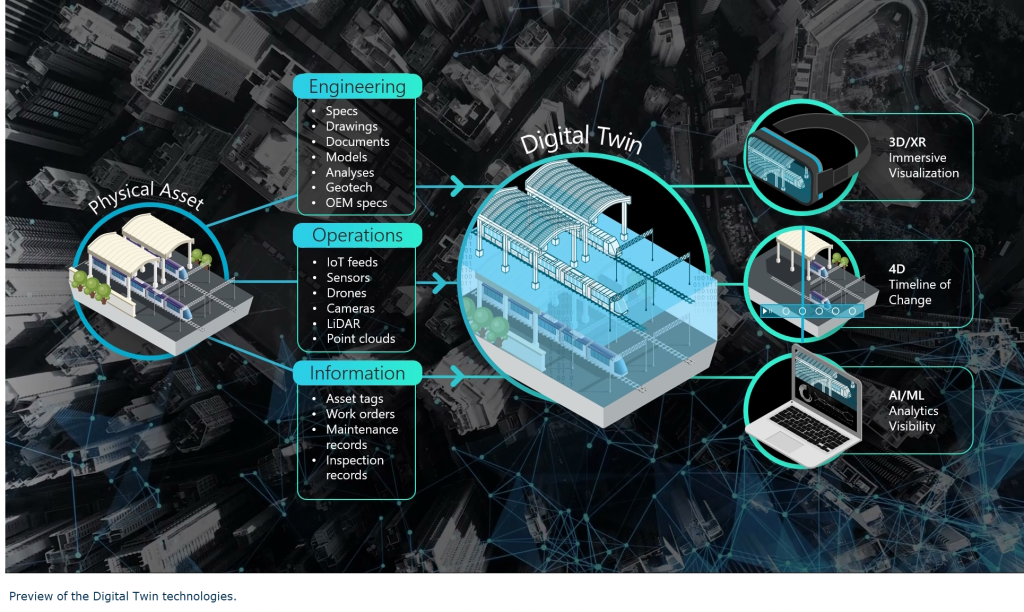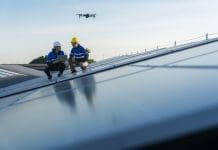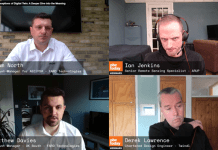Kevin Vivien, project manager for construction at Bentley Systems, looks at the wider benefits of digital twins and how they can move the industry forward
Throughout the lifecycle of a project, data has always been the key element in keeping things moving forward throughout the various design, bid and construction stages to the eventual handoff to the owner-operator. Digitising the data in the form of a digital twin gives project stakeholders a competitive advantage by enabling them to make quick and informed decisions based on real-time data accessible at anytime from anywhere. A trend being seen across the industry is that a digital twin is becoming more widely accepted and being implemented on construction projects.
A digital twin is a digital representation of a physical asset, process or system, which includes the engineering information that allows us to understand and model and analyse its performance. Its relationship to the physical asset and its ability to instantaneously reflect any changes is where the digital twin provides its value.
Digital twins are continuously updated using data from multiple sources, such as 2D, 3D, 4D and 5D data; reality data modelling; geotechnical engineering; and the latest advancements in artificial intelligence and machine learning (AI/ML) technologies.
From conception to completion, a digital twin creates a single view of truth, providing the information needed to improve performance, predict and prevent unscheduled downtime, lower operating costs and address any potential safety concerns that may arise during the project lifecycle. These advantages will increase profitability and reliability, as well as bolster a company’s reputation, which ultimately leads to increased future opportunities. There is no question to why this emerging technology is on track to becoming the norm for all construction projects that use model-based technology.
Then and now
For years, BIM was (and still is) the modelling term that is widely used in construction. This term emerged about 30 years ago but became more common 10 years after that. For those in the construction space, for 20 years, BIM was the end-all construction and building modelling term. Even though BIM is still common in everyday conversations, the “digital twin” terminology is emerging more every day.
What is the difference between BIM and a digital twin? A digital twin is a realistic digital and dynamic representation. The keyword is dynamic and it is what distinguishes a digital twin from any other static model like BIM. A digital twin is living. It’s changing along with the physical asset, which equals the ability to federate data from different types of data repositories, including BIM models, drawings, specifications, documents, analytical models, photos, reality meshes, Internet of Things (IoT) feeds and enterprise resource and enterprise asset management data.

Initiating a digital twin
Prior to construction, when creating a digital twin for a greenfield project, designers can start with a clean slate and the ability to incorporate all elements of the technology stack, including geospatial and geotechnical data, photos, 2D and 3D design files, BIM models specifications, and reality modelling data.
The digital twin, used in conjunction with a cloud service, allows for a project to be visualised and analysed by all vested parties from the onset. The digital twin becomes a live model, which is constantly updated as the design and planning progresses and offers better visibility. When introducing geospatial information, along with mixed or augmented reality tools, the users can visualise the project in its proposed environment.
For heavy civil projects, details such as road grades and drainage can be analysed in the design stage for any possible issues, and corrections can be made and synced instantaneously. Additional environmental conditions – such as lighting, traffic flow, accessibility and even wind speed and direction – can be evaluated to gain insight and provide a detailed view of how the constructed model may look and perform. These insights allow project teams to make data-driven decisions and, therefore, predictable outcomes on key performance indicators.
A digital twin is similar to looking at a 360-degree view of a car online and being able to see all that the car has to offer both inside and out. This view, along with the data specs with efficiency and safety ratings, provide the buyer with a wealth of knowledge about the vehicle before ever laying eyes on it.
Utilising the digital twin for construction
During the many construction stages of a project, a digital twin can deliver a constantly updated source of information to the entire team. The data flow between office and field is stored and easily accessed from one location, including asset tags, maintenance records, inspection records and work planning details.
Teams can take design models and reality models and turn them into 4D or 5D construction digital twins. This work enables the transformation of workflows, such as model-based planning, with the real-time progress tracking from the field. Execution workflows, such as machine control earthworks, can be automated. Teams can leverage the model to access and capture real-time compliance and performance tasks or data to make better, faster decisions that keep projects in control in terms of cost, schedule, quality and safety.
Because the digital twin is constantly synced in real-time, companies can monitor progress against a schedule created using 4D modelling, foreseeing possible issues that could cause construction delays and mitigating them before they happen. They can make sure that machinery is in the correct location at the correct time, coordinating material delivery. The prevention of such delays can significantly prevent cost overruns.
A large capital construction project will generate thousands – if not millions – of records, including drawings, emails, specifications, RFIs, issues, daily logs, photos and other media files. Members of the construction team, whether in the office or field, need to have access to the most up-to-date information for the task at hand without spending a considerable amount of time searching for it. With a digital twin hosted in the cloud, this information is available with a hand-held device and an internet connection. In some instances, if an internet connection is not available, the necessary information can be downloaded beforehand and any changes synched to the digital twin once a connection has been made.
Growing use of IoT and AI/ML technologies
Digital twins delve into the emerging IoT technologies, using sensors, smart devices, site cameras and unmanned aerial vehicles to collect data from the physical location. AI/ML and software analytics are used to quickly analyse the data and report findings. These technologies allow the team to run simulations on a project that has not been completed and can make corrections on processes or systems that have not been built or implemented. This workflow helps prevent construction reworks, saving time and money during the project lifecycle.
In the construction industry, the use of unmanned aerial vehicles has dramatically increased because using traditional methods, such as LiDAR and laser scanning, requires a lot of manual effort. This practice is also increasing the number of data points on a construction site due to processing aerial footage versus aerial LiDAR. People can fly unmanned aerial vehicles daily, track progress and quickly compute information, such as earthwork volumes or daily site progress.
With visualisation and reality model software, such as Bentley Systems’ LumenRT, the integration into digital twin technology has made it so that visualisation and simulation aspects are no longer a separate process. In the past, if you wanted a simulation, it was done in a different format. Tens of thousands of dollars were spent creating a simulation of a snapshot in time that could only be sent out as a video. Now, with reality modelling software, it reads the digital twin and creates interactive animation and simulations. In the case with LumenRT, these animations are tied into the project schedule in the 4D model. They are quickly updated as the digital twin updates and are now part of mainstream workflows.
Another emerging trend for the construction space is AI/ML. Some construction software companies are exploring how these advanced capabilities can benefit contractors and construction projects. One example is the control media indexing service by Bentley’s SYNCHRO. This service leverages AI/ML to index the jobsite photos, allowing anyone to find a photo-based on date or time, location (geospatial position), context (form data and photo description) and a custom-trained construction AI/ML classification of the photo’s contents. Users can search for any text in a photo, such as equipment tag or photo objects like cranes, grade stakes, traffic cones, utility covers.
Facility maintenance
Once a project is fully constructed and operational, the digital twin is an as-built model for the owner-operator. There is a bi-directional flow of data between the digital twin and its physical counterpart, using IoT data points to provide real-time analysis on system performances. These analyses are then used to increase efficiencies on the systems and provide maintenance information to prevent possible downtime. Maintenance engineers can consult the digital twin for specs, allowing them to understand how and why things were engineered and simplify maintenance.
Conclusion
Adoption of digital technology among engineers and contractors still has plenty of room for growth, particularly in the United States. Companies that are already implementing BIM workflows may find it easier to take the next step and transition to digital twins. However, if organisations have yet to embrace it, it is important to know that the migration toward digital solutions is vital and inevitable.
A recent survey was conducted by Dodge Data & Analytics showed that less than one-third of the US civil engineers and contractors who responded were using reality capture, model-driven jobsite automation and digital twins. This compares with 50% or more from companies outside of the US.
It is estimated that the global digital twin market will grow from $3.1bn in 2020 to $48.2bn by 2026, with an average CAGR of 58% in that period, according to a report from Markets & Markets.
At Bentley Systems, we see great potential for the construction industry to evolve – and technology is the primary catalyst. Changing market dynamics and shifting perspectives will create more opportunities for construction technology solution providers and we believe that digital twins can be instrumental in moving the industry forward.
Kevin Vivien
Project manager for construction
Bentley Systems
Tel: +44 (0)808 101 9247
Twitter: @bentleysystems
LinkedIn: Bentley Systems


















